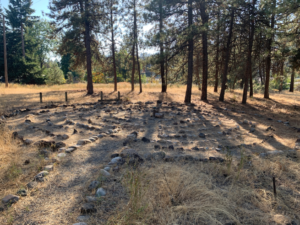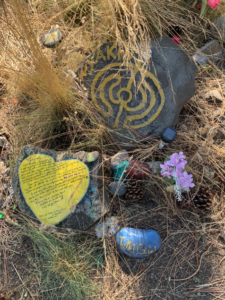Day 3:
Today, we had a chance to meet the families who will be occupying the homes we are building. Each woman has their own story, but their perseverance and spirit and hearts are the same. These homes are actually built for the children and as each child grows up, when they get married, they would then leave the home to create a home with their spouse. The youngest child in the home remains the owner, and can live there indefinitely. The fact that the children are the intended occupants is important for several reasons.

All of these women’s husbands have passed away. If any of the women were to remarry, and the new husband did not want to accept responsibility of caring for the children (which is not uncommon), he would not be able to live in the house. That’s how they make sure that the house is primarily for the care of the children.
In these two picture, you can see the current home of a family we are assisting. The first  is inside of their old home. This picture was taken from the doorway, so you can see how small the space is. This front section is about a third to half of her home space. The wall behind us is a storage area, and slightly to the right is a sleeping area of equal size. As you can see, daylight and sky show through the grass roof. It’s quite a small, cramped space where she lives along with the four children she cares for. There is no real protection from the elements, and with the rainy season approaching, we are anxious to get the homes done so they can move in and get settled. 
Also please notice that this brick is not fired, which means that when there’s heavy rain and downpour, the bricks melt into mud piles.
I’m super excited to be helping change these women and children’s lives.


One of the women was going to remarry, but the potential new husband was not willing to take on the children, so that relationship did not work out.
When the women were asked what their number one concern was, their immediate response was about the health of the children, and the second greatest concern was regarding the kid’s having an education. Children are eligible to start school at the age of six, however many parents elect to hold them from attending school until they are older because school is approximately two miles away, abd there is no bus service. Consequently, many of this villages children do not start school until they’re old enough to walk the distance on their own.
Public-school is until the eighth grade, at which time they take Malawi national exams – I imagine that is something similar to the standardized testing we have. The child can move on to the next level of education ONLY IF they pass exams, and IF they have the funds to pay for the schooling, uniforms, etc. This is a huge barrier for many of these impoverished families. School is broken down into three terms of three months each, and each term costs approximately $50,000 kwacha.
The young man in the far right (in the red shirt) is 16 years old and in fifth grade. He wants to be a doctor when he grows up. He was one of the young men working at the site today and I was SO impressed with him and his work ethic. Initially, I thought he was one of the masons’ apprentices. It wasn’t until this afternoon’s meeting with the families that I realized he is one of the children who will be living in the home. I’m not sure why he wasn’t in school today – I’ll need to ask that tomorrow!








